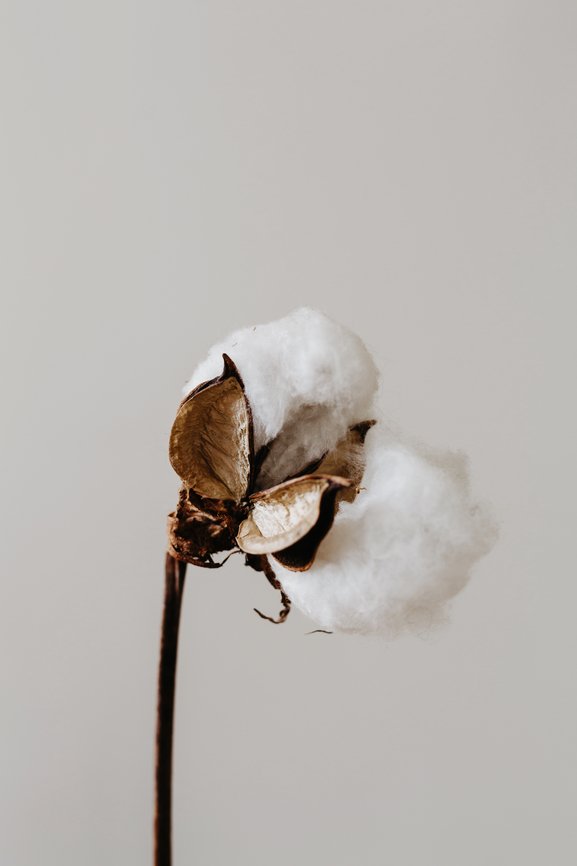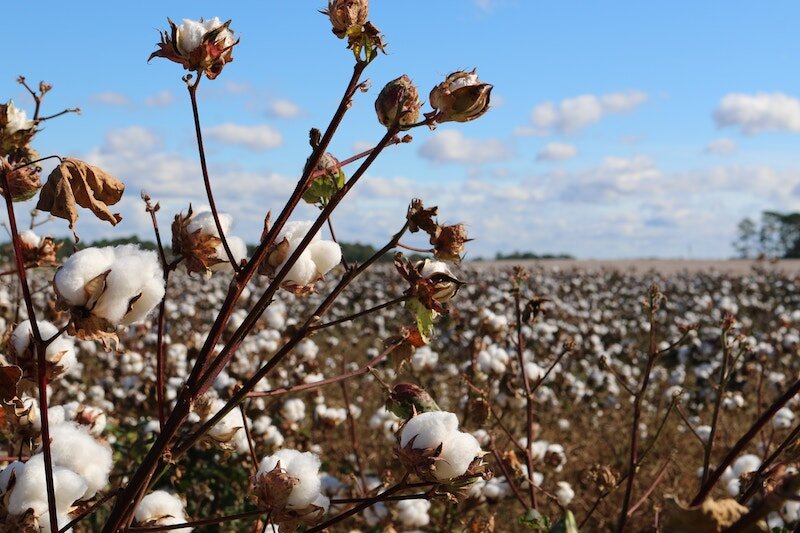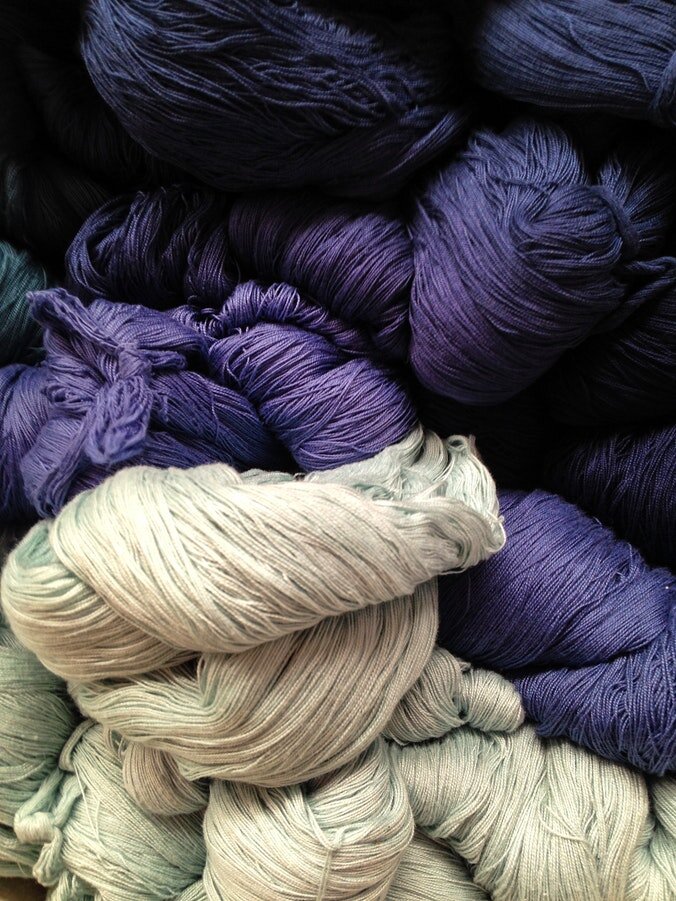
How Sustainable Can Our Fashion Be? A Look At Best Practices For Sustainable Supply Chains
What Does A Supply Chain Actually Look Like?
If you try to visualize the supply chain of your favorite t-shirt, what do you see? With countless ways to source materials, process them into fabric and sew our clothes, the fashion supply chain reaches thousands of factories big and small across the globe. Within a complex system like this, it can be extremely difficult to stay sustainable.
As consumers, what can we reasonably expect from fashion companies working towards a more sustainable future? While there’s no one answer, we are going to do our best to show you, step by step, what a sustainable supply chain could look like, and what to look for in a company doing their best to manufacture responsibly.
Step 1:
The Raw Materials
It all starts with harvesting the raw materials for our fabrics. The most sustainable options are natural and easily renewable, such as cotton, hemp, wool and eucalyptus trees, to name a few.
Cotton might come as a surprise, but when farmed without the toxic chemicals that most conventional cotton is treated with, it doesn’t damage the soil, has less impact on the air, and uses less water and energy per acre than conventional cotton. It also has a fast renewable lifecycle of about 8 or 9 months. And because cotton can be harvested and converted right here in the USA, its carbon footprint is lower. Other fast growing, rotational crop fibers include flax, linen and hemp.
Eucalyptus trees also regenerate quickly, and when harvested are cut rather than rooted, helping them to grow back faster. However, unlike cotton plants, the wood from eucalyptus requires energy input to convert it into yarn before it can be used for clothing (more on this later).
As the first step in a supply chain, fashion companies may need to start by forming a relationship with farmers, along with their fabric suppliers, to know how the raw materials in their fabrics were grown, harvested, converted or otherwise made. If they are buying fabric straight from a supplier, this information could be considered proprietary, and therefore inaccessible. Fabric suppliers who are transparent with their customers are most likely sustainably minded—and are selling their goods at a premium due to higher quality and labor costs.
“Fabric suppliers who are transparent with their customers are most likely sustainably minded—and are selling their goods at a premium due to higher quality and labor costs.”
Step 2:
Converting Raw Materials Into Yarn
Once the raw material is harvested, energy and resources are required to spin it into yarn. This is where natural fibers like cotton have an advantage. The processing is entirely mechanical—eliminating the need to add any harsh chemicals before its yarn is shipped to a textile mill for use.
Which brings us to semi-synthetic fibers. These are natural fibers that do require a chemical process to become soft and silky yarns. Some examples are rayon (a.k.a. viscose), lyocell, modal and bamboo. However, not all of these fibers are created equal.
Rayon (and sometimes bamboo) are most commonly produced through a toxic process called ‘the viscose process’. Cellulose (a common compound found in plants) is dissolved in a solvent containing carbon disulfide to create a thick viscous solution (thus its second name, viscose) that is then spun into threads using sulfuric acid. Carbon disulfide is a toxic chemical that is a known human reproductive hazard. It can endanger factory workers and pollute the environment through air emissions and wastewater. Around 50% of this solvent in most viscose factories is recovered, which means that the other half goes into the environment. This is why there are no rayon producers in the U.S.; EPA regulations deemed the wastewater discharges too damaging to the environment, and shut down the last of rayon manufacturers more than a decade ago.
But wait! Before you give up on semi-synthetic fibers, meet Tencel (the brand name version of lyocell, owned by Lenzing). Tencel also requires a solvent to convert wood pulp into fiber, but is a great option for the following reasons:
Lenzing uses a non-toxic organic solvent to extract the fiber from their wood pulp
The solvent is almost 100% recycled in a closed loop production process
The wood pulp used for Tencel comes from certified sustainable sources
Purchasing fabrics with brand name fibers inside, like Lenzing, who are transparent about their sustainable practices, can take a lot of the homework away from companies looking for peace of mind about their fabric’s origins.
Step 3:
Weaving & Finishing Fabric
Next, yarn is sent to textile mills to be woven or knit into fabric. To keep this process within the United States, options are limited. North Carolina is the nation’s third-leading employer of textile workers, behind California and Texas, according to the U.S. Bureau of Labor Statistics (BLS).
Lydia Wendt of Cloth Foundry, an innovative textile and apparel company with a triple bottom line sustainable product, has been working in partnership with American mills to deliver goods that start their life cycle at an American farm and end in an all-US supply chain.
“The challenges our US mills and manufacturers are facing when competing in the global market is that much of their machinery is obsolete. The budget is just not there to invest in new machinery and innovations, because their expenses are high and tied up in higher labor, land, and operational costs than offshore options, where wages are very low and countries subsidize and more fully support manufacturing.”
After the mill weaves, or knits, yarn into fabric, the unfinished fabric (also known as greige goods) must be washed (scoured), dyed and framed to be prepared for production. This is true even if a company does not plan on dyeing their fabric, as the wash/scour controls the shrinkage and torque of the fabric. The process known as “finishing” introduces a big point of entry for toxic chemicals to be added to the fabric, such as sodium hypochlorite or chlorine bleach, used for bleaching.
Step 4:
The Dye Process
Once fabric has been woven and finished, it’s ready for the dye process. The dyeing process poses an especially big problem for the fashion industry’s water footprint. Dye houses in Asia and South America, for example, continually dump wastewater into local rivers, poisoning water supplies and ruining farmland.
“The water used in the dye process, whether conventional or natural is huge. If we are utilizing this natural resource, it is our responsibility to ensure that the wastewater ingredients can be easily assimilated back into the earth.”
So what green alternatives can companies turn to? By embracing green chemistry and eliminating toxic chemicals from the dye process, the wastewater dye houses produce would be significantly less harmful when re-entering the environment.
“The water used in the dye process, whether conventional or natural is huge,” says Wendt, whose company works only with natural dyes and finishes. “If we are utilizing this natural resource (water), it is our responsibility to ensure that the wastewater ingredients can be easily assimilated back into the earth, and also easily separated out for water reuse and minimal low-to-no toxin safe waste management. We use natural dyes and green chemistry because the ingredients can be composted and biodegrade without poisoning our environment. In addition, all of the ingredients are sourced from above ground, no crude oil derivatives, so the environment can reabsorb our effluence/manufacturing byproduct more easily and the people directly involved in the manufacturing can more safely handle our products in any stage of the supply chain without worry of getting sick.”
Step 5:
Cut & Sew
Finally, at the end of the supply chain, there are the factories and workers who cut, sew, and sometimes print our garments. This is the part of the supply chain that, while being the most labor intensive, is subject to the greatest cost cuts.
“Making sure that workers are safe and receiving a living wage should not be a noteworthy exception, but an industry-wide rule, and a cost that no one can afford to cut.”
Costs are largely reduced by taking advantage of lower prices in markets in developing countries. Workers in Bangladesh, where 80% of the country’s exports are apparel, currently earn the lowest minimum wage in the world, taking home about $43 a month. Chinese factory workers make slightly more: $117 to $147 a month. In contrast, American garment workers earn about $9 an hour, taking home $1,660 a month.
This is the part of the supply chain in which companies should have the most control, and where brands like H&M are running out of excuses. Making sure that workers are safe and receiving a living wage should not be a noteworthy exception, but an industry-wide rule, and a cost that no one can afford to cut.
Supply Chain In Review
So how many fashion companies can claim a 100% sustainable supply chain? A notable very few, when you consider how involved they would have to be along every step of the way. If companies don’t personally oversee the farming, processing and finishing of their fabrics, they can’t be sure the organic cotton they invested in wasn’t treated with unwanted chemicals. Small companies face additional challenges if requesting that factories embrace green chemistry in the finish and dyeing processes, because they don’t have the volume order to make this a profitable request. A factory may even be interested in working with green technologies, but they also run a risk of trying something new that is not yet as reliable as the “tried and true” chemically-laden methods that are the industry standard.
The realization that it can be equally difficult for companies and consumers to fully understand their supply chains is, well…disconcerting, to say the least. The upside is that if both consumers and fashion companies keep asking for change within the industry, not only will green technology be the profitable choice, factories will be eager to answer the demand.
“If both consumers and fashion companies keep asking for change within the industry, not only will green technology be the profitable choice, factories will be eager to answer the demand.”
ABOUT THE AUTHOR
Ashley Denisov is the founder of 1×1, a sustainable clothing brand which selects, designs, and releases their favorite wardrobe staples one at a time. She is passionate about sourcing sustainable materials, and exploring cutting edge green technologies for the fashion industry. See her latest collection at 1×1.la.


